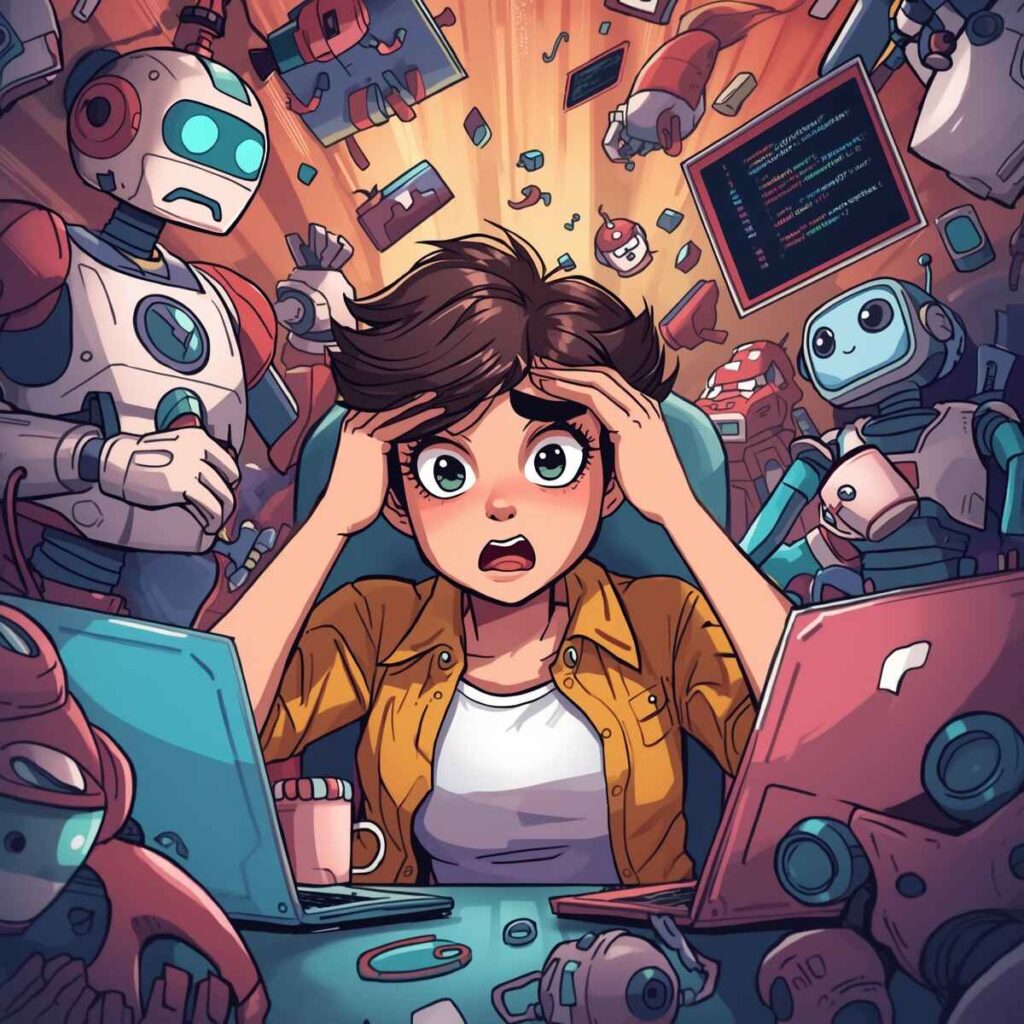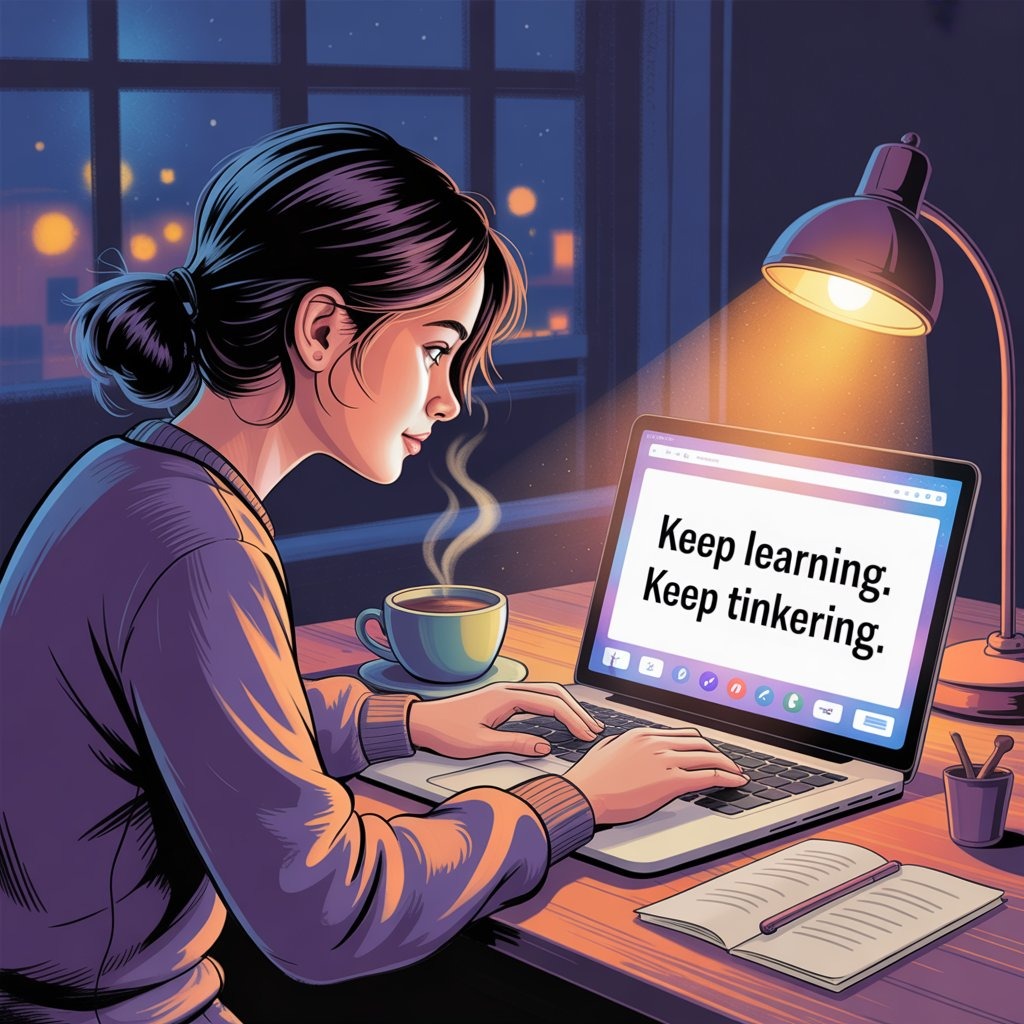
Hey everyone, it’s me — Rutvika, a second-year AI major who’s equal parts excited and confused most days.
If you’re here because AI sounds like the coolest thing since sliced bread (or neural networks), but every time you Google it, you’re hit with a wall of acronyms like ML, DL, and enough math to make your eyes cross — hi. You’re me from last year.
Grab a seat, because I’m spilling what AI actually is — not the textbook version, but the one that finally clicked after months of bad YouTube tutorials and late-night laptop stares.
How It All Started
Picture this: freshman me, wide-eyed after watching a TED Talk where a robot painted like Picasso. I went full drama mode for no reason.
“AI is the future!” they said. “It’ll change everything!”
I was hooked. Signed up for an intro class. Bought a shiny new notebook. Even ordered the famous Artificial Intelligence: A Modern Approach.
Sounds great, right? Nope. By chapter three, I was lost in algorithms, Bayesian networks, and sentences that felt like alien code. AH, it hurts YES! It does more than love, bro
“Wait,” I thought, closing the book hard, “isn’t AI about smart machines? Why all these probability trees that argue like families?”
The Overwhelm Phase
That was hurdle one — the overwhelm.
AI fascinated me — world-changing stuff — but I had no clue what it really meant.
Sure, I knew the buzzwords: Siri, Netflix, self-driving cars. But pinning down what made them AI? Tough.
Everywhere I looked, it jumped straight to Machine Learning (ML) or Deep Learning (DL) — cool, yes, but like learning to swim by diving into the ocean. And then you will drown….
Here’s how I finally made sense of it 👇
What AI Really Means (The Simple Way)
AI isn’t just coding robots or training models. It’s about making machines do things humans call smart — see, decide, and learn — without needing step-by-step instructions every time.
Seeing (Perception)
Your phone’s face unlock feature? That’s AI recognizing patterns in pixels to know it’s you.
Deciding
Chess bots beating pros? AI weighs choices, predicts outcomes, and picks the best move from millions of “what ifs.”
Learning
That’s where ML and DL come in. Machines get better with practice — just like us learning to ride a bike.
Why I Love AI (and Still Fear It a Bit)
AI isn’t a sci-fi takeover — yet 😅.
It’s more like a calculator for thinking: it helps us handle the repetitive stuff so we can dream bigger.
Sure, it raises real questions — like bias, fairness, and jobs — but it also opens doors to creativity and innovation.

Welcome to BTA Writes
This space is for learners, dreamers, and the “still figuring it out” crowd.
Here, we’ll talk about AI the human way — no jargon walls, no stress. Just clear, fun, hands-on learning.
From basics to cool projects, I’ll share my wins, fails, and lessons so you can skip the confusion and start building.
If second-year me could go from “What even is this?” to “This is awesome,” you can too.
AI isn’t just a field — it’s a mindset.
Skip the heavy books, try a Python “Hello World,” or watch a video—euh, we will discuss which one in another lesson. Mess up. Learn.
🔗 Suggested Sources Section Example
Sources:
- 3Blue1Brown – Neural Networks Explained Visually
- Google AI Blog – Research & Discoveries
- MIT Technology Review – Artificial Intelligence News
- Towards Data Science – Beginner-Friendly AI Articles
- Stanford AI Course Notes (CS221)
❓FAQs Section (For Students & Learners)
Q1: What kind of courses or guidance do you provide?
A1: We help students and professionals learn Python, Artificial Intelligence, and project-based skills through structured, practical learning resources.
Q2: Are these resources free?
A2: Yes, most of our learning guides and project materials are free and community-driven.
Q3: I’m new to AI — where should I start?
A3: Start with Python basics and move to data analysis, machine learning, and small automation projects. We provide step-by-step guidance for beginners.
Q4: Can I showcase my projects on your platform?
A4: Absolutely! We encourage learners to share their AI or Python projects for feedback and portfolio building.
Q5: How can I contact for personalized project guidance?
A5: You can fill out our contact form or reach out via the “Project Guidance” section on our website.